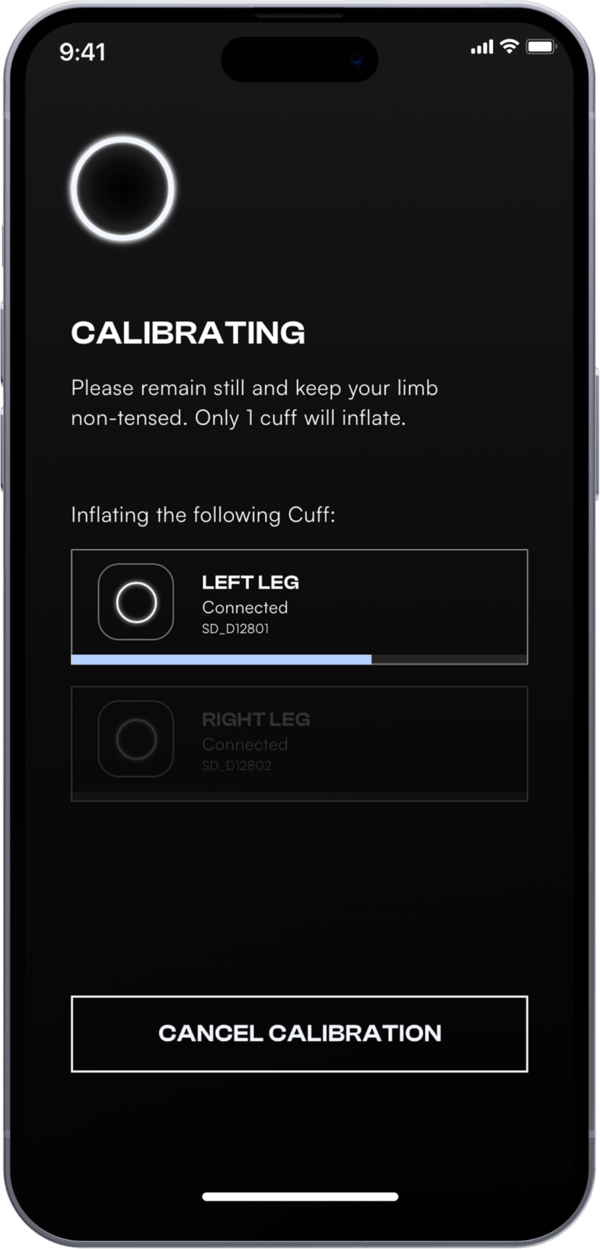
The BFR Cuffs
The world's first wireless, auto-calibrating blood flow restriction cuffs, The BFR Cuffs leverage the benefits of blood flow restriction to reduce the time and intensity required to build muscle and increase strength. Cuffs are sold in pairs.
resistant
cuff
control
via
Bluetooth®
for iOS and
Android
guarantee
calibration
returns
AMPLIFY YOUR TRAINING

AMPLIFY YOUR TRAINING
The reduced oxygen flow to your muscles from The BFR Cuffs helps activate your high threshold motor units faster - these are the ones most responsible for muscle growth.
Training under BFR can significantly increase lactate accumulation and hypoxia (low oxygen in the working muscle), leading to extraordinary improvements in endurance.
BFR cuffs reduce the required training load - meaning you can build muscle with weights as low as 20% of your max output. This can spare your joints and overall fatigue, allowing faster recovery.

Train unhindered by pumps or cables.
Easy clasp
for fast
application
Leg and arm
sizes with
unique widths
Moisture-wicking
technology
The BFR Cuffs work by inflating to restrict a certain percentage of blood flow into your limb (and all blood flow leaving your limb) during your training.
Blood carries oxygen. Less blood flow to the working muscle = less oxygen to the working muscle. This is where the”magic” happens.
Sounds counterintuitive, right? Don’t we want to increase blood flow into the muscle?
It turns out, when oxygen supply to the muscle is limited, this kicks off a cascade of responses in the body that replicate many of the benefits of high intensity training.
This is one reason why blood flow restriction training has time and time again proven through research to be extremely effective at building strength, muscle, and endurance at lower intensity and in shorter sessions.
BFR WORKS
EXERCISE PHYSIOLOGIST
2023 World’s Strongest man and exercise physiologist Mitch Hooper discusses how he utilizes The BFR Cuffs by SAGA to improve his performanceas a strength athlete.
Blood flow restriction training has been studied in many populations - from youth athletes all the way to elderly individuals with congestive heart failure and other health conditions.
We have yet to see evidence of negative health outcomes directly attributable to BFR training, and the general consensus from the scientific community is that BFR training is safe for most people.







